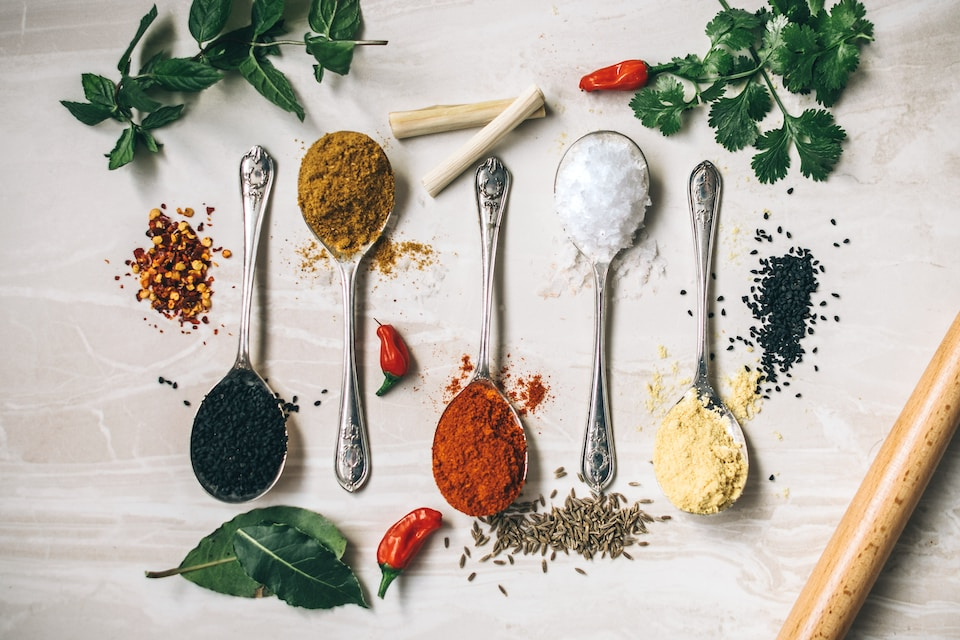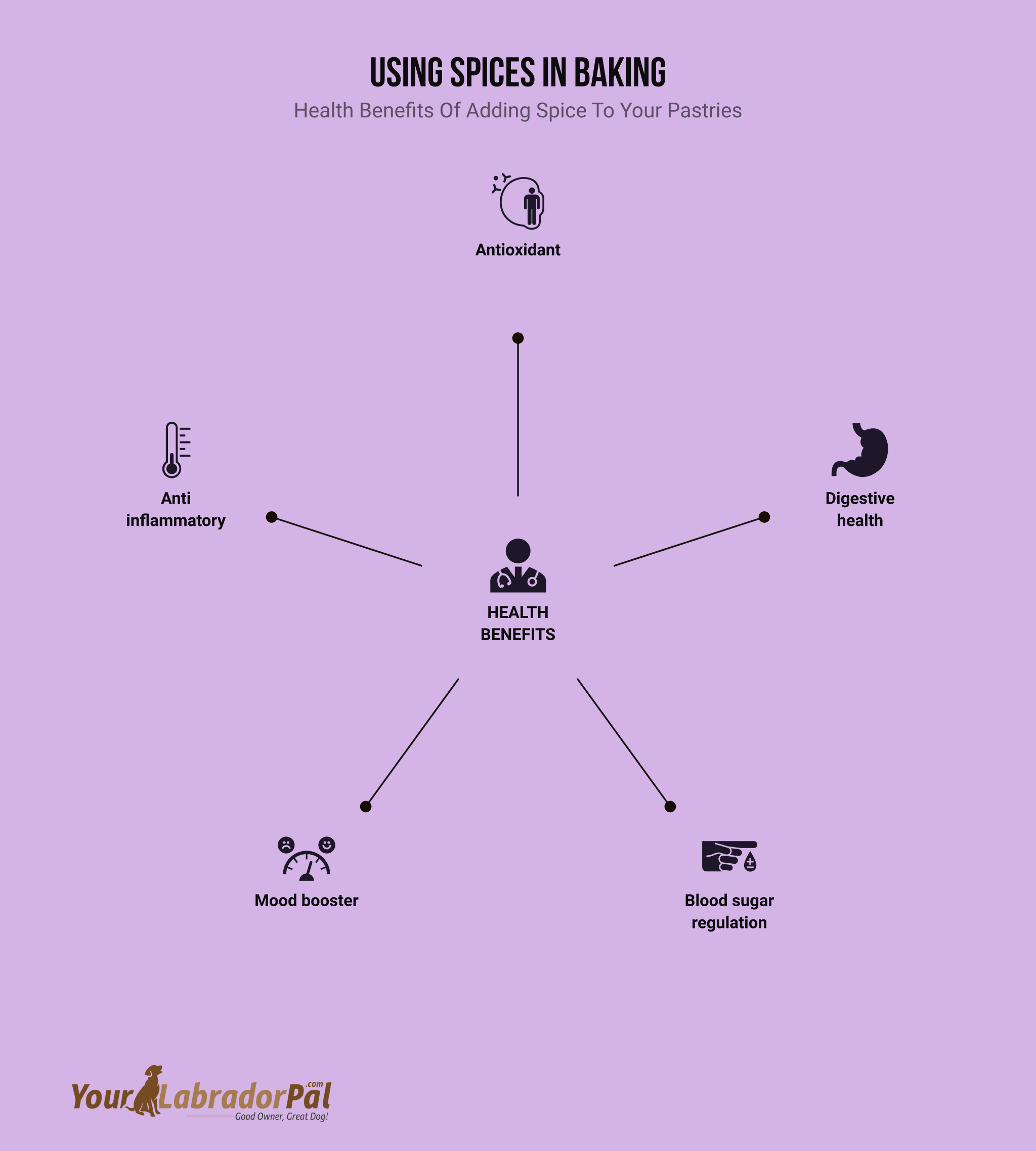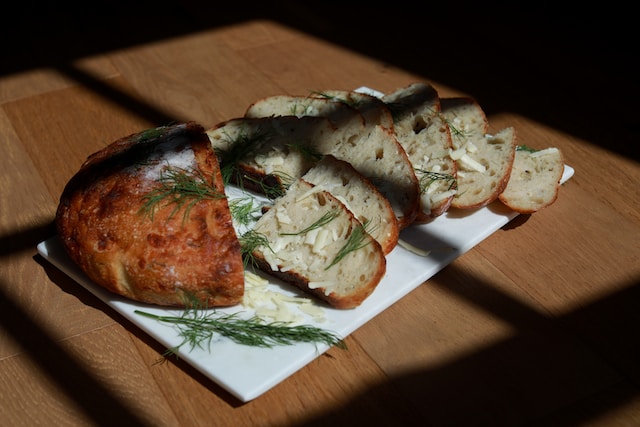Spices have been an essential ingredient in baking for centuries, adding depth, complexity, and flavor to all manner of sweet and savory treats. From classic spices like cinnamon and nutmeg to more exotic blends, spices in baking are a baker’s secret weapon. In this blog, we’ll explore the world of spices in baking, discussing the most commonly used spices, the benefits of adding spices to your baked goods, and tips for how to create your own unique spice blends. Whether you’re a seasoned baker or just starting out, spices in baking can take your treats to the next level, unlocking a world of flavor and creativity.
So grab your apron, preheat your oven, and let’s dive into the wonderful world of spices in baking!
The Role of Spices in Baking

Spices play a crucial role in elevating the flavors of baked goods. From the warm and cozy aroma of cinnamon to the zesty kick of ginger, spices add depth, complexity, and character to any baked treat. Imagine biting into a plain, unseasoned cookie versus one that’s been sprinkled with a blend of nutmeg, allspice, and cloves. The latter is sure to awaken your taste buds and leave you with a lingering sense of warmth and comfort. Similarly, a cake that’s been flavored with vanilla and cardamom is bound to be more memorable than one that’s been made with vanilla alone.
The art of using spices in baking is all about balance and experimentation. You want to use just the right amount of spice to complement the other ingredients without overpowering them. It’s a delicate dance, but one that can be learned and mastered with practice. Additionally, spices can be used to complement other ingredients in a recipe. For example, pumpkin pie spice is a blend of cinnamon, nutmeg, ginger, and allspice that is often used in pumpkin-based recipes. And this is to enhance the natural sweetness of the pumpkin and create a harmonious flavor profile.
Spices also play a role in cultural traditions and evoke memories of home and family. Many traditional recipes, such as gingerbread, fruitcake, and hot cross buns, are made with specific blends of spices that have been passed down through generations.
The Most Commonly Used Spices in Baking
✤ Cinnamon
Cinnamon is the warm and cozy spice that makes you think of fall and holiday baking. Its sweet and earthy flavor profile can add depth and warmth to any baked good. One creative way to use cinnamon is to mix it with sugar and sprinkle it over a warm slice of buttered toast. Another creative idea is to add cinnamon to your morning cup of coffee or tea for a comforting and delicious start to your day.
✤ Nutmeg
Nutmeg is a sweet and slightly nutty spice that pairs well with cinnamon in many classic baked goods. Its warm and comforting aroma can evoke feelings of nostalgia and home. One creative way to use nutmeg is to grate it over a cup of warm apple cider for a cozy fall drink. Another creative idea is to add nutmeg to your pancake or waffle batter for a subtle and delicious twist on a classic breakfast dish.
✤ Ginger
Ginger is a zesty and pungent spice that adds a kick of flavor to any baked good. Its sharp and spicy flavor profile can be used to balance out the sweetness in many desserts. One creative way to use ginger is to make a batch of ginger syrup and drizzle it over pancakes or waffles. Another creative idea is to mix ginger with honey and spread it on toast or muffins for a flavorful and healthy breakfast.
✤ Cloves
Cloves are an aromatic spice with a warm and slightly bitter flavor. They are often used in combination with cinnamon and nutmeg in classic holiday recipes like pumpkin pie and gingerbread. One creative way to use cloves is to add them to your homemade barbecue sauce for a smoky and flavorful twist on a summer classic. Another creative idea is to mix cloves with brown sugar and butter to make a delicious and fragrant glaze for roasted sweet potatoes or carrots.
✤ Allspice
Allspice is a complex spice with a flavor profile that is similar to a combination of cinnamon, nutmeg, and cloves. It is often used in cakes, pies, and cookies for a unique and delicious twist on classic recipes. One creative way to use allspice is to mix it with a bit of olive oil and use it as a marinade for chicken or fish. Another creative idea is to add allspice to your morning oatmeal for a flavorful and nutritious breakfast.
✤ Cardamom
Cardamom is a fragrant spice with a sweet and floral flavor. It is commonly used in Scandinavian baked goods like cardamom buns and gingerbread cookies. One creative way to use cardamom is to add it to your morning smoothie for a unique and delicious flavor twist. Another creative idea is to mix cardamom with a bit of honey and lemon juice to make a flavorful and refreshing salad dressing.
✤ Vanilla
Vanilla is an essential ingredient in many baked goods and adds a rich and sweet flavor to cakes, cookies, and other desserts. One creative way to use vanilla is to add it to your morning cup of coffee or tea for a sweet and flavorful pick-me-up. Another creative idea is to mix vanilla with a bit of honey and plain yogurt to make a delicious and healthy dessert parfait.
Benefits of Adding Spices to Your Baked Goods

✦ Anti-inflammatory properties
In addition to reducing inflammation in the body, spices like cinnamon, ginger, and cloves can help create a warm and inviting atmosphere in your home. Try simmering a pot of spiced apple cider on the stove during the fall and winter months to fill your home with the comforting aroma of cinnamon, cloves, and nutmeg.
✦ Antioxidants
Spices like cinnamon and nutmeg not only provide a burst of flavor in your baked goods but also contain powerful antioxidants that can help protect your body from damage caused by free radicals. Try adding a sprinkle of cinnamon to your morning coffee or tea for an antioxidant boost that will help you start your day off right.
✦ Digestive health
Spices like ginger and cardamom have been used for centuries as natural remedies for digestive issues. Try adding ground ginger to your homemade granola bars or muffins for a spicy kick that will also help soothe your stomach.
✦ Blood sugar regulation
Cinnamon is a natural blood sugar regulator and has been shown to improve insulin sensitivity in people with type 2 diabetes. Try adding a dash of cinnamon to your morning oatmeal or yogurt for a delicious and healthy breakfast that will help keep your blood sugar levels stable throughout the day.
✦ Mood-boosting properties
The aroma of spices like cinnamon, nutmeg, and clove can have a powerful effect on your mood and emotions. Try baking a batch of spiced cookies or muffins during the holidays to create a warm and inviting atmosphere in your home that will help you feel relaxed and happy.
How to Use Spices in Baking
✱ Use fresh spices
To make sure you’re getting the freshest spices, consider buying whole spices and grinding them yourself as needed. Not only will this ensure maximum flavor, but it can also be a fun and satisfying process. You can use a mortar and pestle or invest in a spice grinder to grind your spices.
✱ Use the right amount
Remember that spices are meant to enhance the flavor of your baked goods, not overpower them. If you’re unsure about how much to use, start with a small amount and adjust as needed. A good rule of thumb is to use about 1/4 to 1/2 teaspoon of spice for every cup of flour in your recipe.
✱ Toast your spices
Toasting your spices can bring out their flavors and aromas, making them more potent and flavorful in your baked goods. You can toast your spices in a dry skillet on the stove, or in the oven on a baking sheet. Just be careful not to burn them!
✱ Experiment with combinations
When it comes to spices, the possibilities are endless. Try experimenting with different combinations of spices to find your own unique flavor profile. For example, you might try adding a pinch of cayenne pepper to your brownie batter for a spicy kick or using a blend of cinnamon, ginger, and allspice in your pumpkin pie.
✱ Add spices to the wet ingredients
Adding your spices to wet ingredients like butter or eggs can help ensure that they are evenly distributed throughout the batter. Be sure to whisk the wet ingredients together thoroughly before adding the dry ingredients to disperse the spices evenly.
✱ Store your spices properly
To keep your spices fresh and flavorful, store them in an airtight container in a cool, dry place. You can also store them in the refrigerator or freezer to extend their shelf life. If you’re looking for a creative way to store your spices, consider using a spice rack or a magnetic spice board.
Tips to Maximize Spices In Baking

➼ Start with fresh, high-quality spices
Using fresh and high-quality spices can make a huge difference in the taste of your baked goods. Spices that have been sitting on your shelf for too long can lose their potency and flavor. To ensure you are using fresh spices, try to purchase them from a reputable source and store them in a cool, dry place. You could also try growing your own spices at home in a herb garden, which not only ensures freshness but also adds a touch of creativity to your baking.
➼ Measure accurately
When it comes to baking, accuracy is key. A little too much or too little spice can completely change the flavor of your baked goods. To measure spices accurately, use a kitchen scale or measuring spoons, and level the spices to ensure you are using the correct amount. For creative flair, consider using unique measuring spoons that are shaped like your favorite spices!
➼ Use whole spices and grind them yourself
Using whole spices and grinding them yourself can make a huge difference in the flavor of your baked goods. Whole spices have a longer shelf life than pre-ground spices and grinding them fresh ensures the best flavor. To grind spices, you can use a mortar and pestle or a spice grinder. For added creativity, try using a unique spice grinder, such as a manual coffee grinder or a vintage hand-cranked spice mill.
➼ Toast your spices
Toasting spices before using them in baking can bring out their flavor even more. This is a technique popular in Indian cuisine, where spices are dry-roasted in a pan before being ground into a powder. To toast your spices, simply heat them in a dry skillet over medium heat for a minute or two, stirring constantly, until fragrant. For a creative touch, use a cast-iron skillet or try toasting your spices on a grill or in a smoker.
➼ Combine complementary spices
Combining complementary spices is a great way to add depth and complexity to your baked goods. Classic combinations include cinnamon, nutmeg, and allspice, but don’t be afraid to experiment with new combinations. For example, try using cardamom and ginger in your next batch of cookies. Or, you can mix clove and star anise in your apple pie filling. Get creative with your spice combinations and discover new flavor profiles!
➼ Add spices gradually
When using spices in baking, it’s important to add them gradually and taste as you go. This will help you achieve the desired level of flavor without overpowering the other ingredients. Start with a small amount and add more as needed, tasting as you go. This will allow you to adjust the amount of spice to suit your personal taste. For added creativity, try using spice syringes to add small amounts of spice to your baked goods.
➼ Balance sweetness with spices
When using spices in baking, it’s important to balance them with sweetness. A little bit of sugar or honey can help bring out the flavors of the spices. For example, if you are making a chai-spiced cake, you could add a bit of honey to balance the spices. Alternatively, you could use spices to add sweetness to your baked goods. For example, try adding a bit of cinnamon and nutmeg to your sweet potato pie filling to enhance the natural sweetness of the potatoes.
Making Own Spice Blends for Baking
Making your own spice blends for baking can be a fun and creative way to add unique flavors to your baked goods. Here are some tips for creating your own spice blends:
⦿ Start with a base spice
Choosing a base spice can help you build your spice blend from the ground up. Consider the flavor profile you want to achieve and choose a spice that will complement your other ingredients. For example, if you’re making a spice blend for apple pie, cinnamon might be a good base spice to start with.
⦿ Experiment with different spices
Once you have your base spice, don’t be afraid to experiment with different combinations of spices to find the perfect flavor profile for your recipe. You can try adding a pinch of cardamom or nutmeg to your cinnamon blend. Or, try combining multiple base spices for a more complex flavor.
⦿ Consider the intensity of the spices
When creating your spice blend, it’s important to consider the intensity of the spices you’re using. Some spices, like cayenne pepper or cloves, can quickly overpower other flavors. Try using smaller amounts of these spices and balancing them out with milder spices like ginger or allspice.
⦿ Use fresh spices
Using fresh spices can make a big difference in the overall flavor of your baked goods. Try buying whole spices and grinding them yourself, or make sure your pre-ground spices are no older than a year old.
⦿ Store your spice blends properly
To ensure your spice blends stay fresh and flavorful, store them in an airtight container in a cool, dark place. Consider labeling your spice blends with the date you made them, so you can keep track of their freshness.
By following these tips, you can create your own unique spice blends that will add depth and complexity to your baked goods. Don’t be afraid to experiment and have fun because the possibilities are endless! Try incorporating your homemade spice blends into classic recipes like cookies, cakes, and pies, or use them to add a twist to savory baked goods like pieces of bread or quiches. The sky’s the limit!
Final Words
To sum up, we explored the most commonly used spices in baking, the benefits of adding spices to your baked goods, and tips for how to use and create your own spice blends. By incorporating spices into your baking, you can create unique and unforgettable treats that will tantalize your taste buds and impress your friends and family.
So the next time you’re whipping up a batch of cookies, cakes, or pieces of bread, don’t forget to add a pinch of your favorite spices. With a little experimentation and creativity, you can take your baking from ordinary to extraordinary.
Happy baking, and may your spices always be fresh and flavorful!
